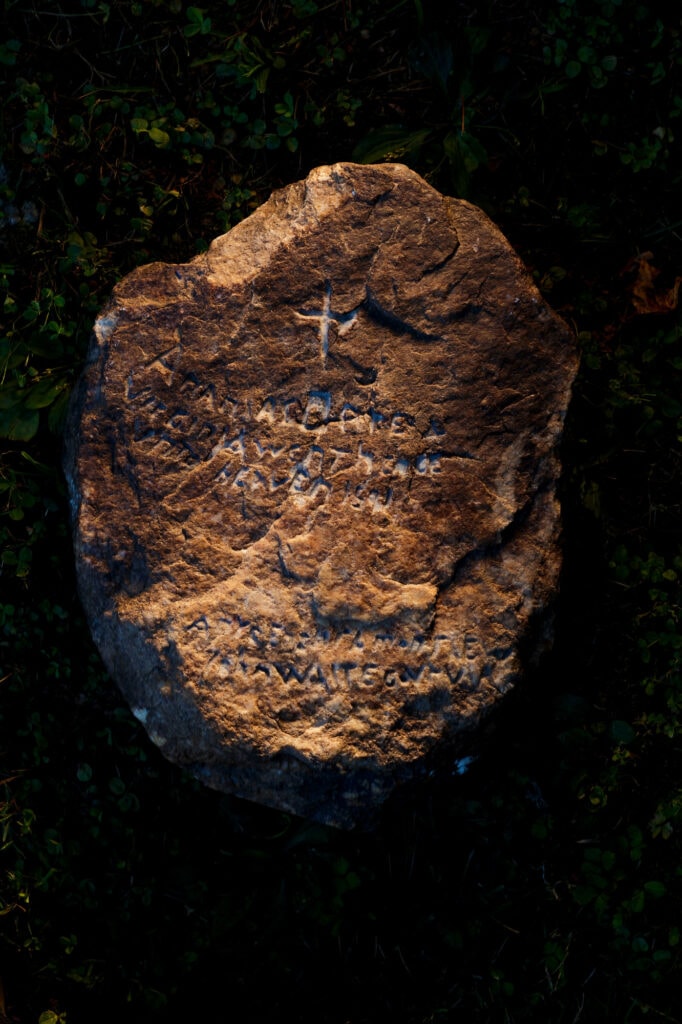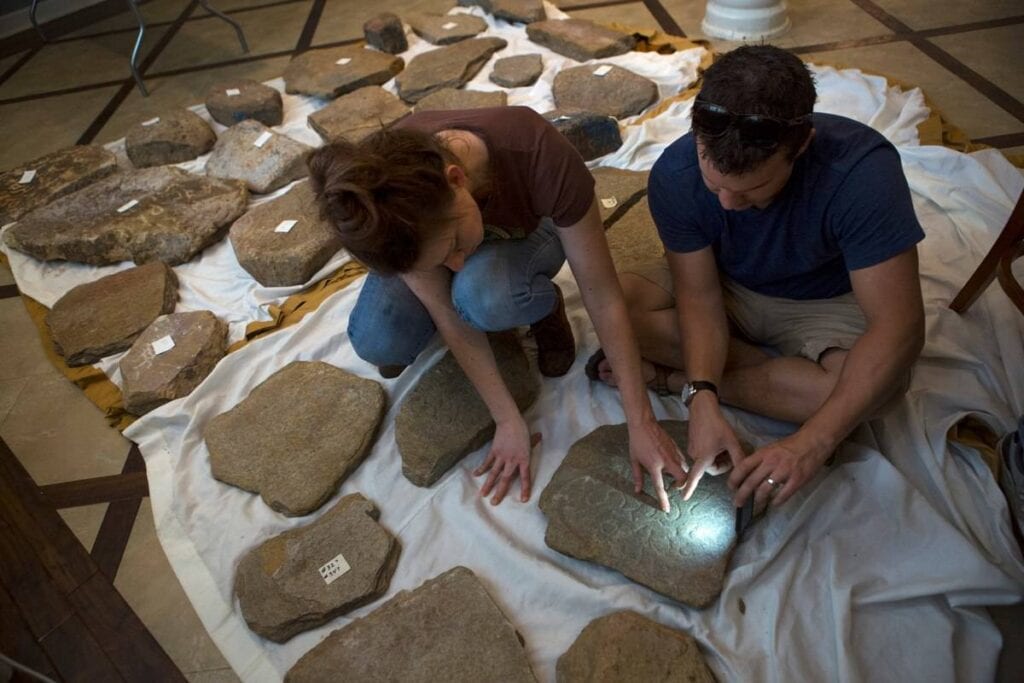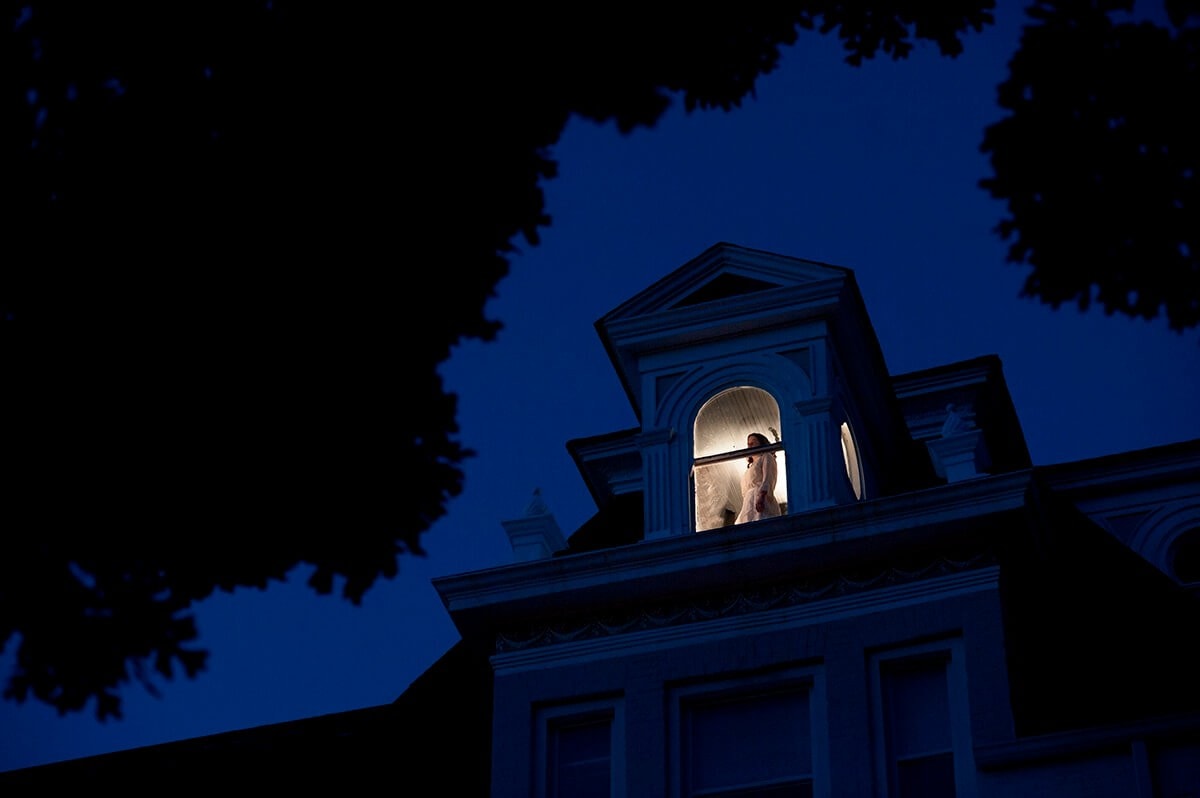The Dare Stones
Eleanor White Dare (c.1563-c.1599) of Westminster, London, was a member of the Roanoke Colony of North Carolina and the daughter of John White, the colony’s governor. Although little is known about her life, more is known about her than most of the 16 other women who left England in 1587 as part of the Roanoke expedition.

She married a stone carver named Ananias Dare and gave birth to Virginia, the first child of English parents born in North America, on Aug. 18, 1587. This family, along with everyone else in what became known as the “Lost Colony,” disappeared while her father went to get supplies back in England.
From 1937 until 1941, the so-called “Dare Stones” were frequently in the news. The 48 carved stones allegedly were found in North Georgia and the Carolinas. The first bore an announcement of the death of Virginia Dare and her father, Ananias Dare, at the hands of natives in 1591. Later stones alleged to date from this period, brought in by various people, supposedly told a complicated tale of the fate of the Lost Colony. Each of the later stones were addressed to John White and signed with the name of Virginia’s mother, Eleanor. These stones called for revenge against the “savages” or gave her father the direction taken by the survivors. A stone dated 1592 indicated the survivors had reached a sanctuary in the Nacoochee Valley area and lived there in “primeval splendor.” Another stone, dated 1598, indicated that Eleanor had married the leader of the tribe. A stone dated 1599 announced Eleanor Dare’s death and indicated she had left behind a daughter named Agnes.

Professor H.J. Pearce Jr., who enjoyed a sterling reputation as a historian at Brenau and Emory University, believed in the authenticity of the stones, and his views won over some well-known historians, according to contemporary press accounts. But a 1941 article by journalist Boyden Sparks in The Saturday Evening Post attacked the story, pointing to improbabilities in the stones’ account and producing evidence that the discoveries likely were hoaxes. Pearce and the other scholars were not implicated in fraud and no legal action was ever taken, but they all renounced belief in the stones.
Today, Brenau keeps the Dare Stones as a sort of 20th-century media curiosity and recently began a re-evaluation of the first stone. The others still are regarded as fake.
Agnes, Brenau’s resident spirit
Brenau legends suggest that a 1920s undergraduate named Agnes fell in love with a professor and hanged herself when he did not return her affections. She has been “sighted” on campus since the 1930s, and students often tell stories of her friendly but mischievous “appearances” on campus.
The Other Agnes
Another legend involves the Dare Stones. Eleanor Dare, presumed author of the writing on the stones, married an American Indian from an Appalachian tribe that believed spirits of the dead took up residence in large stones. The inscriptions on the stones at one point report the death of a child named Agnes. Ironically, reports of a campus ghost did not occur until the time Brenau acquired the Dare Stones, leading one ghost-lore expert to speculate that Brenau may be home to two ghosts named Agnes.
Red, the Crudup Spirit
Another ghostly legend claims that a neighborhood child fell into the concrete foundation when Crudup Hall was under construction. According to the myth, he was not reported missing for several days and his body was never recovered. He will often draw on the walls in closets in Crudup if you leave a red crayon or marker around.
